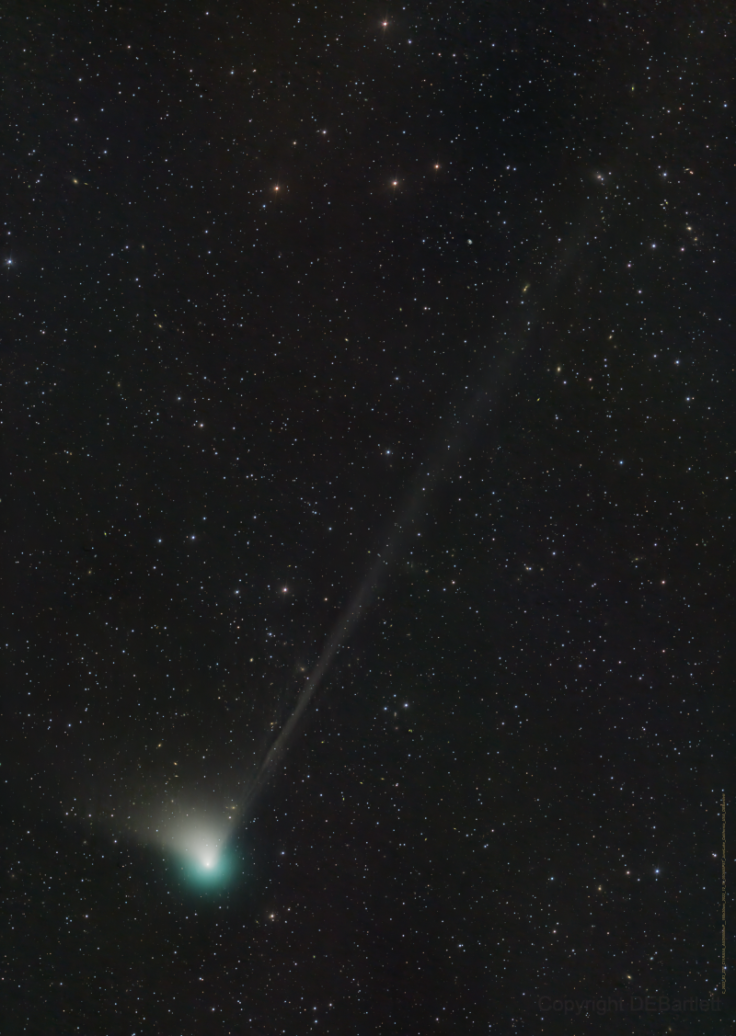A comet never before seen by the people living on Earth will soon come to say hi.
Comet C/2022 E3 (ZTF) is fast approaching Earth, with scientists expecting the comet not seen since the last Ice Age by Feb. 1.
The comet, popularly known as the green comet, is a prime example of a long-period comet, which comes from the Solar System's Oort cloud and last passed through the inner solar system around 50,000 years ago, per Space.com.

What Is Comet C/2022 E3 (ZTF)?
Comet C/2022 E3 (ZTF), more popularly known as the Green Comet or the "Ice Age Comet," is quite a visitor. According to NASA, it was recently discovered in March 2022 by astronomers at the Zwicky Transient Facility.
They believe that the comet was last seen on Earth during the time of the Neanderthals at the time of the last great Ice Age, a time when Wooly Mammoths and saber-toothed cats roamed the lands, per NPR. This time, however, humans are now up and about and ready to see the comet for the first time.
The comet, according to Popular Science, made its closest pass by the sun on Jan. 12 and will fly around 26-27 million miles of Earth on Feb. 1, on its perigee - its journey out of the solar system and back into the Oort Cloud.
For those unaware, the Oort Cloud is the most distant region of the Solar System, a place which many scientists believe is the origin of most, if not all, of the solar system's long-period comets like the Ice Age Comet, per NASA.
This distance, to put it into context, is about 28% of the way between Earth and the sun. Thanks to this, people will have no problem watching the comet fly by Earth using everyday tools.
How To See The Ice Age Comet
If you wish to make the comet fly by a more memorable one, looking up at the night sky is the best way to go about it. According to In-The-Sky, people in New York can see the comet above the horizon most of the night due to the comet being circumpolar from the city.
It will become visible at around 6:49 PM EST on Feb. 1 and then would disappear at the break of dawn at around 5:57 AM EST on Feb. 2. Fortunately, people who couldn't watch the comet fly by on the night of Feb. 1 can do so sometime during early February due to the comet's speed.
The comet is visible to the naked eye, but it should be easier to spot it with binoculars or a telescope. If you want an easier time to spot the comet by eye, you may want to look up at the night sky by Feb. 5, when the comet is next to the star Capella in the Auriga constellation.
You may also opt to look up at the night sky between Feb. 9 and Feb. 13, when the comet is near Mars in the Taurus constellation.
Related Article : An Ice Age Comet Will Make an Appearance Again After 50,000 Years









